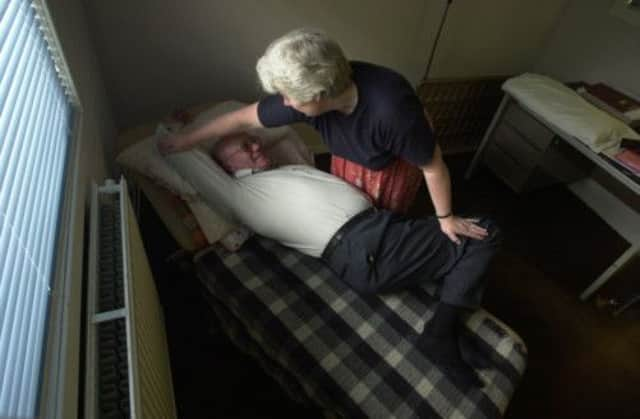MS: 10,000 Scots living with multiple sclerosis


Figures from the Atlas of MS 2013 show that the rate of MS across the UK now stands at 164 cases per 100,000 people, based on the latest available estimates.
It also shows that Scotland has among the highest prevalence of the condition in the world, with around 10,000 sufferers living in the country.
Advertisement
Hide AdAdvertisement
Hide AdGlobally, there has been a 9.5 per cent rise in cases of MS since 2008, when the last atlas was produced. About 2.3 million people worldwide are now estimated to have the disease.
Experts said the rising number of patients living with MS was most likely due to improvements in the diagnosis and reporting of the condition, and increased life expectancy.
The atlas, produced by the Multiple Sclerosis International Federation (MSIF), showed that the prevalence of MS in Scotland was 188 cases per 100,000 people in the population, slightly behind Northern Ireland at 190 but higher than the 138 cases in Wales and 162 in England.
In terms of the number of patients, it means that about 10,000 people are now living with MS in Scotland, compared with 3,500 in Northern Ireland, 4,200 in Wales and 85,900 in England.
It has long been reported that Scotland has among the highest rates of MS in the world, with environmental factors such as a lack of sunshine and genetics thought to be behind the greater prevalence.
The atlas backs up this claim, with few countries exceeding Scotland in terms of cases per 100,000 of the population.
The highest rates were also seen in other countries in northern hemisphere, including Canada at 291 cases per 100,000 people, Denmark at 227 and Sweden at 189.
There is no cure for MS, which affects nerves in the brain and spinal cord, causing problems with muscle movement, balance and vision.
Advertisement
Hide AdAdvertisement
Hide AdToday’s report also confirms that women are twice as likely to have MS as men, although in some countries women are three times as likely to have it.
The study found the number of neurologists worldwide had increased by 30 per cent and the provision of MRI machines, key to early diagnosis and treatment, had doubled in the past five years in emerging countries.
The report also estimated that up to 5 per cent of people with MS developed it before the age of 18.
Peer Baneke, chief executive of MSIF, said: “With this new edition of the Atlas of MS, we now have a much clearer picture of where the gaps are and where improvements have been made in the battle to diagnose and treat this debilitating disease.
“What is obvious is that inequalities exist not only between developed and emerging countries, but within countries themselves, for example within the UK. For example, a recent UK MS Society report shows the extent of inequalities in the treatment of people with MS in the UK.”
Professor Alan Thompson, chairman of MSIF’s International Medical and Scientific Board, said: “Capturing the enormity of the global impact of MS clearly and accurately is essential if we are to improve management of the disease and reduce disability.
“Nowhere is this more relevant than for those with progressive MS, for whom the lack of effective treatments and the steady deterioration in abilities is particularly challenging.”
Ed Holloway, head of care and services research at the MS Society, said: “The Atlas of MS is a useful tool. The more we know, the better equipped we are in ensuring people to have fair access to the treatments and services they need.
“For the UK, it’s incredibly useful to see these figures in a worldwide context.”